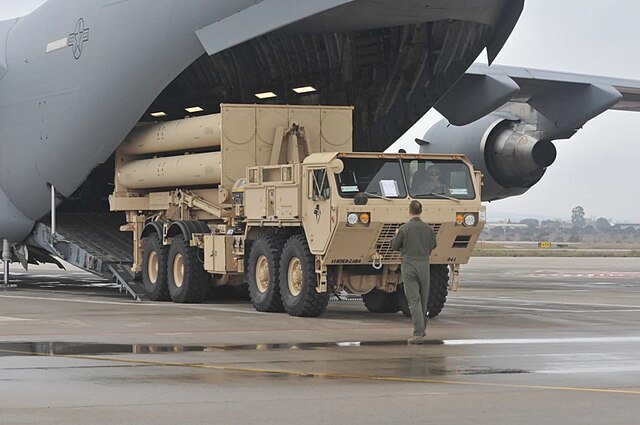U.S. Deploys THAAD Missile System and Troops to Israel Amid Escalating Tensions with Iran
In a significant move to bolster Israel’s air defenses, the United States has announced the deployment of its advanced Terminal High-Altitude Area Defense (THAAD) missile system, along with approximately 100 U.S. troops to operate it. This decision comes in response to rising tensions in the region, particularly following a series of Iranian missile attacks targeting Israel. The Pentagon made the announcement on Sunday, underscoring the seriousness of the situation and America’s commitment to Israel’s defense.
Rising Threats from Iran
The backdrop to this deployment is a series of unprecedented missile strikes from Iran aimed at Israel, with notable attacks occurring on April 13 and again on October 1, 2023. While the U.S. has previously sent THAAD systems to Israel for training exercises, the addition of American troops marks a new level of involvement in the region. According to Pentagon spokesperson Maj. Gen. Patrick Ryder, this move highlights the U.S.’s "ironclad commitment to the defense of Israel" and aims to protect American personnel from potential missile threats.
What is THAAD?
So, what exactly is the THAAD system? Designed to intercept and destroy ballistic missiles during their terminal phase, THAAD provides a crucial layer of defense against long-range missile attacks. It complements Israel’s existing missile defense systems, such as the Patriot and Iron Dome, which are primarily used for short-range threats. Each THAAD battery typically consists of six truck-mounted launchers, 48 interceptors, and the necessary radar and communication equipment, requiring a full complement of 95 soldiers to operate effectively.
U.S. Military Presence in the Region
This deployment is part of a broader strategy by the U.S. to increase its military presence in the Middle East amid escalating tensions. Following Hamas’s surprise attack on Israel on October 7, 2023, the U.S. has ramped up its military assets in the region, deploying additional warships, aircraft carriers, and enhancing air defenses across the eastern Mediterranean, Red Sea, and Arabian Sea. Furthermore, U.S. troops have been stationed in Cyprus to assist with potential evacuation operations.
Diplomatic Efforts and Concerns
In light of the recent Iranian missile strikes, U.S. officials have been in close consultation with Israeli leaders regarding a potential military response. President Joe Biden recently spoke with Israeli Prime Minister Benjamin Netanyahu, urging a measured response and cautioning against targeting sensitive sites like Iranian nuclear facilities, which could escalate the conflict further.
Iran’s Warning
The situation is further complicated by Iran’s stern warning against U.S. military involvement in Israel. Iranian Foreign Minister Abbas Araghchi took to social media platform X (formerly Twitter) to caution the U.S. about its actions. Despite these warnings, the U.S. remains steadfast in its support for Israel, emphasizing the need for enhanced defense measures in light of the growing threats.
Looking Ahead
As Israel prepares for a potential military response to the October 1 missile attack, the deployment of the THAAD system provides an additional layer of security against further Iranian aggression. The presence of U.S. troops to operate the system signals Washington’s deep commitment to the security of its key ally in the Middle East.
In a world where tensions can escalate quickly, the U.S. and Israel are taking proactive steps to ensure their defense capabilities remain robust. As the situation unfolds, all eyes will be on the region, watching how these developments shape the future of U.S.-Israeli relations and the broader geopolitical landscape.



